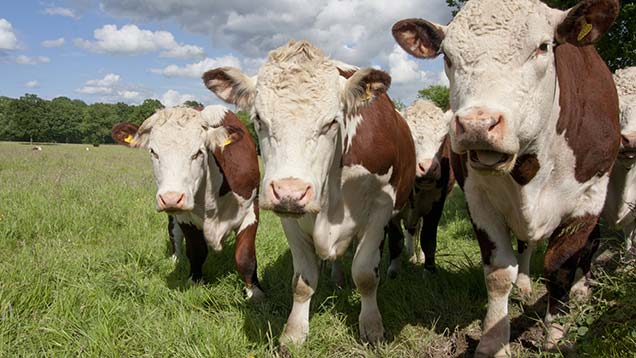UK beef industry could face more Irish competition in 2016
 © Rex
© Rex UK beef farmers could be facing even stiffer competition from Ireland as signs point to an upturn in Irish beef production next year.
Ireland is forecast to produce about 8% less beef this year due to high levels of slaughtering in 2014, but a recovery in the second half of 2016 looks likely.
Two key factors pointed to a lift in the country’s beef production, said AHDB Beef and Lamb – the growth of dairy cow numbers since 2010 as Ireland has prepared for the abolition of milk quotas, and the increased number of calves in the production cycle due to falling live exports.
The combined increase in cattle available for slaughter in 2016 and 2017 would therefore increase, with the quicker-finishing dairy animals likely to start being slaughtered towards the end of 2016.
“Such developments in Irish beef production have the potential to have an effect on the situation in the UK since the UK market accounts for about half of Irish beef exports,” warned the levy board.
See also: Analysis: What will AHDB levy spending review mean for farmers?
“Much of the increased production could well be available to the UK market at competitive prices given the demand for Irish beef is likely to remain robust in some segments of the retail environment.”
Ireland accounted for 70% (179,000t) of the UK’s beef imports last year and so has a major influence on the British beef sector – and with a strong pound and weak euro, Irish beef is more competitively priced.
Despite reduced Irish beef production in 2015 to November, UK imports of Irish beef have not reduced.
Debbie Butcher, senior analyst at AHDB Beef and Lamb, said this was “solely on the back of the exchange rate.”
Beef-sired calf registrations were up 90,000 head in the year to September, while dairy calf registrations were up 16,000 head.
Irish farmers started expanding their dairy herds in 2010 in preparation for the abolition of milk quotas in April this year.
In 2015 to the end of October, live exports were down more than 50,000 head on the year, largely due to a fall in trade with the Middle East, which continued to be volatile.
